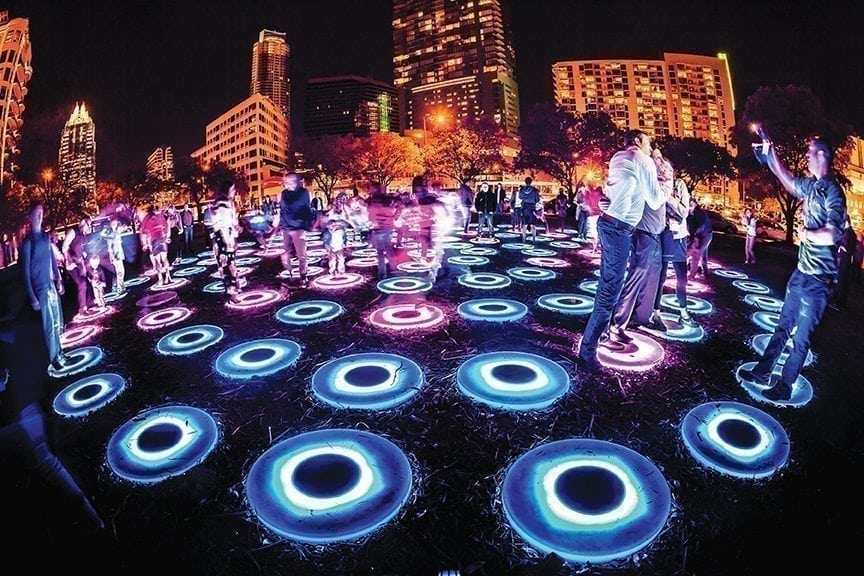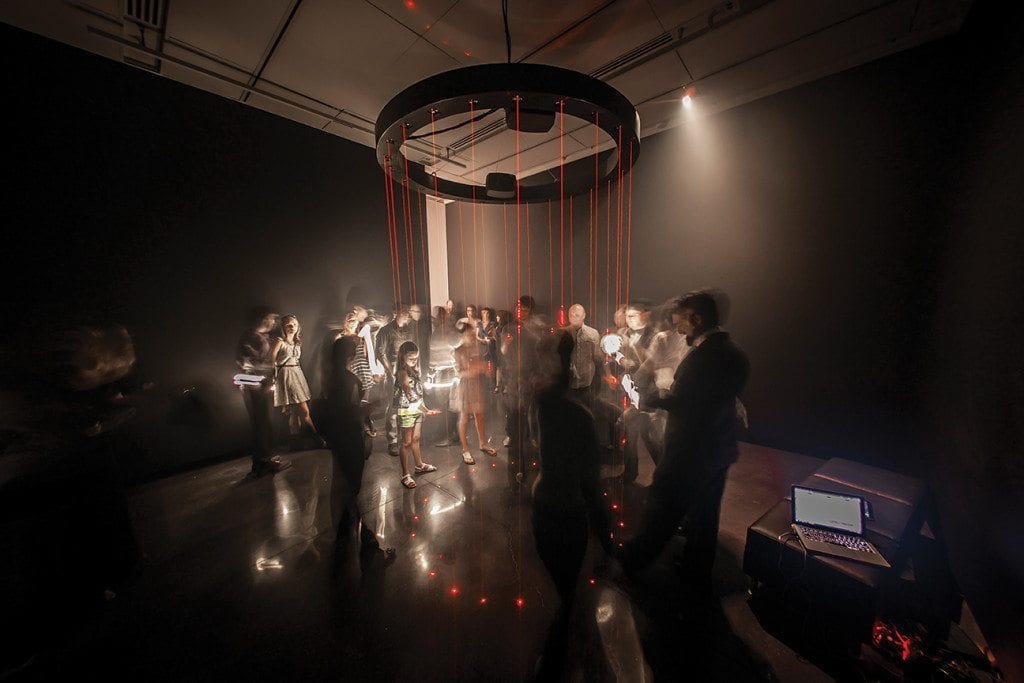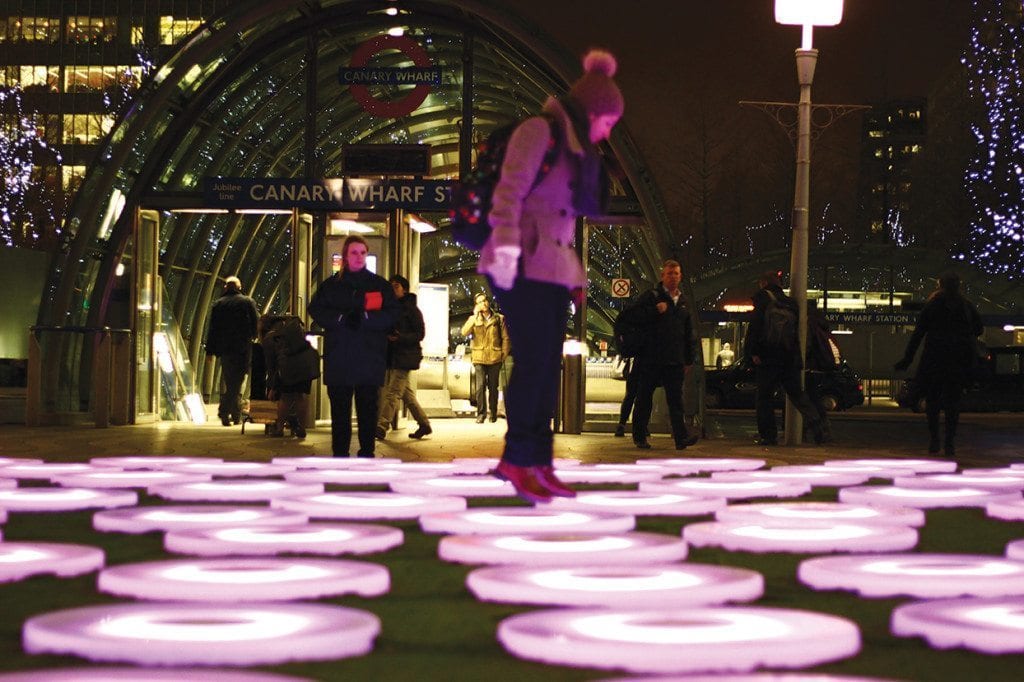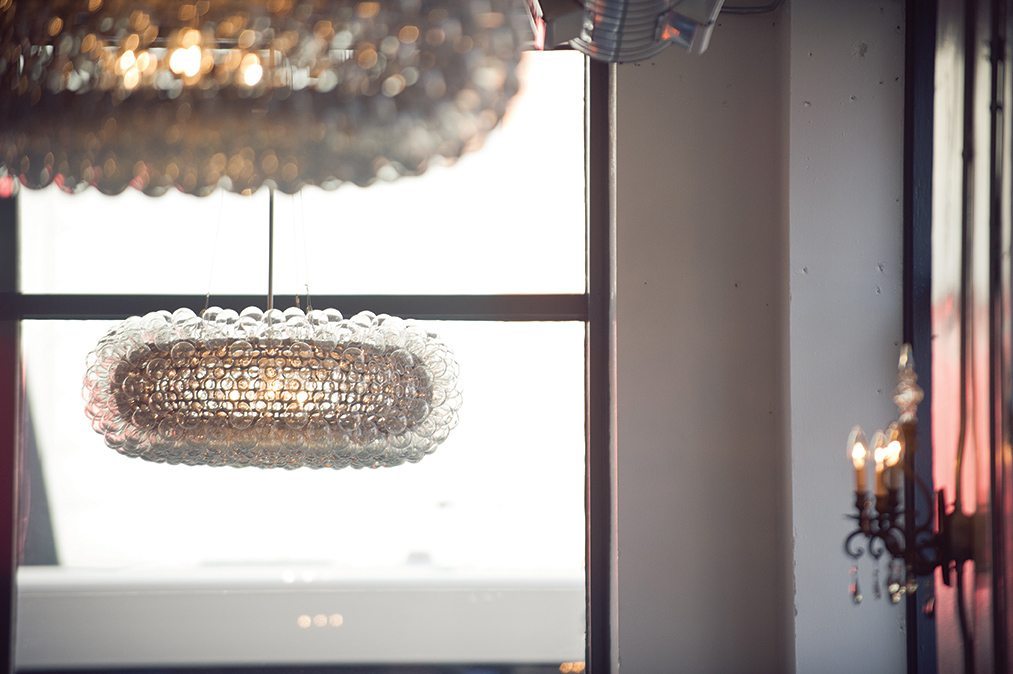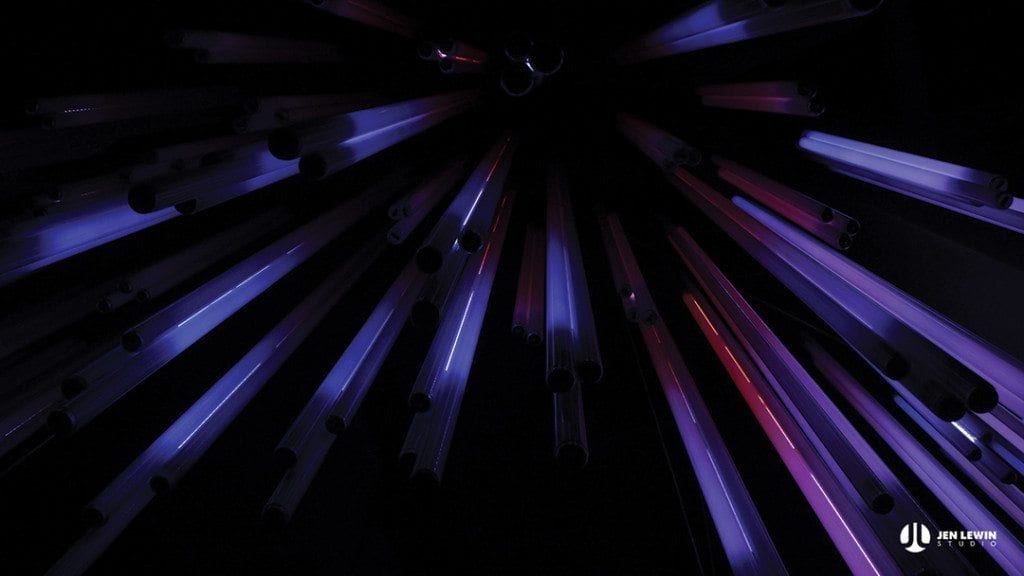Internationally renowned light and interactive sculptor Jen Lewin’s most famous work is The Pool, a giant installation of interactive circular pods that produce colored light when stepped (or jumped, or danced) on. The project, like many of Lewin’s others, uses tech to create an artistic and interpersonal experience. The TEDx alum has studios in Boulder, CO, and New York, NY.
Innovation & Tech Today: Technology tends to get a bad rap when it comes to interpersonal connections, but your work sits at the intersection of technology, art, and community. Do you think that tech could bring people together more?
Jen Lewin: Absolutely. I think it’s actually one of the most prolific tools for building community. We forget that sometimes. Look at social media and how much time people spend connecting and reconnecting. I think that’s actually something worth remembering; there’s this level of connection that is created by technology. There certainly are problems – we spend too much time on the screen, but I think there are also some really great successes. For me, my work is very much about that new technology. It’s about just sort of bringing people into the space. They start talking to each other and interacting with each other in the same way that a lot of social media tries to allow.
I&T Today: How do you see technology as an artistic medium?
JL: I watched this change over time. There are different ways that people are thinking about technology and art. There is this quote [by Michael Bell-Smith], “Technology is about solving problems; art is about creating problems.” Sometimes I felt as an artist using technology I had a dueling mind. My goal is to make art. What matters is what is created and how these tools build this art. I have to make sure that I’m being truthful to what I want to build. The other thing to remember is it’s not about the tools, but about what we create with the tools.
I&T Today: Your Edison pieces really stood out to me because they seem to have a different tone.
JL: I have a personal love for old machine parts. I think they’re really beautiful. In that particular piece, I love the glass and the imperfections of old light bulbs. The piece uses extremely high-tech LEDs, but it puts the LEDs into glass that was imperfect and had character. I just love finding older objects that have this character and then modernizing them and having that dance between the two.
I&T Today: Do you feel like there’s something inherently sad about technology in that it is constantly being replaced?
JL: Absolutely. I’ve some typewriters that are very, very old, and they’re built to last for a long time, to last forever. I don’t think things like our phones are made to be that way anymore. I had this interesting discussion about a world where we kind of go back to that. We may get to a certain point where we want to have devices that are well-crafted again.
I&T Today: It’s such a great part of your work that the viewers can actually become participants in the art.
JL: It’s important to make people feel enabled in this. I think this is one of the most exciting times to be alive. You have all these incredible tools, and there’s so many things that we can do and participate in and connect with. It’s really exciting. We certainly have a lot of problems as a worldwide civilization, but we’re also communicating with each other and defining things. We’re capable of communicating on design very quickly. I enjoy being able to make art as part of this community.
I&T Today: What are you excited about going forward with your art?
JL: We’re excited about the big picture. I love all forms of art, but a public art program is getting lost. I think we forget that public art really is meant to be public. It really needs to engage and the public should be able to participate in it. Not everyone’s going to love it, but you bring in everyone and allow them to have an art experience. I think the goal is to create dynamic works that a lot of people can engage with and, I think that’s going to be very interesting in a park setting. We’re really excited about watching the pieces go out into the world.
I&T Today: How important do you think tech is in engaging the audience?
JL: I draw a lot and I paint a lot. But I’m always drawn back to making the piece really directly interactive, bringing people to participate in the piece in a lot of ways. It’s not just one person touching a button or one person interacting with the screen, but engagement that involves that person also realizing that someone next to them is doing that, too. It’s not just an interaction with the art piece, but an interaction with people around who are also interacting. It sort of becomes a community experience in the artwork.
By Melissa Hirsch & Peter Gietl



